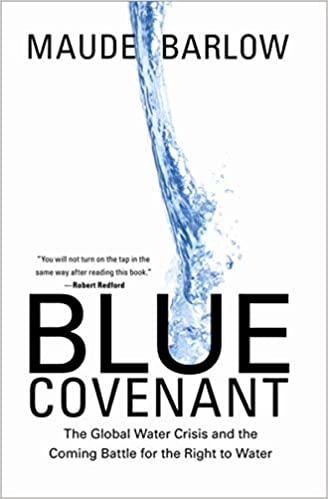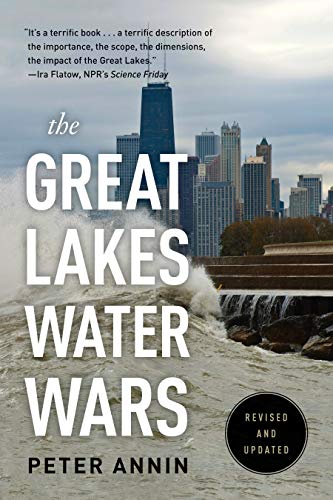
November 24, 2012Overview of New York's New Water Permitting RegulationsIn my previous post, I pointed out some of the problems with the new water withdrawal regulations released by the New York State Department of Environmental Conservation (DEC) last week. In this post, I give a more detailed overview of the new requirements, although, it is not possible to fully evaluate the new requirements until DEC makes the new permit conditions publicly available. The new regulations, prepared as amendments to 6 NYCRR Parts 601 and 621, are posted on the DEC website here and here. The regulations become effective April 1, 2013. Applications for systems withdrawing 100 million gpd or more are due June 1, 2013. New York's new water withdrawal regulations implement the Water Resources Protection Act of 2011. The Act amended the law previously requiring permits for public drinking water suppliers and certain other users to require that all persons withdrawing 100,000 gallons or more per day from any of the state's waters obtain a permit, except for certain exempt users. The new permitting requirements contained in the legislation did not become applicable until the DEC promulgated new regulations. Activities that Require A PermitSection 601.6 prohibits engaging in the following activities without a water withdrawal permit:
Threshold Volume Defined by Maximum Capacity of Water Withdrawal System in Most Cases'Threshold volume' is defined in Section 601.1(p) to mean "the withdrawal of water of a volume of [100,000 gpd], determined by the limiting maximum capacity of the water withdrawal system; except that for withdrawals for agricultural purposes the threshold volume shall mean the withdrawal of water of a volume in excess of an average of [100,000 gpd] in any consecutive thirty-day period; and except that for public water supply systems that have an existing capacity of under [100,000 gpd] but are required by the Department of Health to add redundant wells, threshold volume shall mean the existing capacity of the system, excluding the redundant wells, so long as the withdrawal of water continues to remain below [100,000 gpd]." The Consumptive Use of Water for Gas Drilling Is Not Specifically Subject to Review and ApprovalBecause the proposed permitting requirements contained in Section 601.6 apply to the withdrawers of water and not to the end uses of the water, and because many of the water withdrawals made for gas development purposes are made by independent trucking companies withdrawing less than the permitting threshold of 100,000 gpd, the DEC's proposed permitting requirements will not apply to many of the water withdrawals used for gas drilling purposes. In sharp contrast, both the SRBC rules and the proposed DRBC rules require all consumptive uses of water for the purposes of gas development to be reviewed and approved. The regulations thus fall short of of the oft-stated goal of putting in place regulations in the Great Lakes Basin that will give the state's water resources in the Great Lakes Basin the same protections that apply in the Susquehanna and Delaware Basins. Because the DEC's permitting requirements are not tied to the consumptive use to which the withdrawals will be put, except in one limited case, the regulations fail to implement the requirements of the Great Lakes-St. Lawrence River Basin Water Resources Compact (GLSLRBC). Article 1, Section 4.3.1 of the GLSLRBC provides that "Each Party, within its jurisdiction, shall manage and regulate New or Increased Withdrawals, Consumptive Uses and Diversions, including Exceptions, in accordance with this Compact." ECL § 21-1001. In only one instance under the proposed regulations does the use to which a withdrawal will be put trigger a permitting requirement. Section 601.6(f) requires a permit "for a public water supply system with a capacity equal to or greater than the threshold volume, to enter into a contract or other agreement for the bulk sale of water for a commercial, industrial, or oil or gas well development purpose outside of the public water supply system's approved water service area." Five-Year Phase-In, Largest Permits to be Issued FirstThe new permitting requirements are being implemented by DEC on a staggered schedule over a five-year period. Under the new regulations, the largest users will be issued permits first. 601.7(2) of the regulations lists the dates by which a complete application for an initial permit must be submitted. The staggered implementation schedule make it impossible for the DEC to weigh competing usage requirements. The schedule is manifestly unfair in that it gives priority to the state's largest water users in descending order. Table 1. Dates by which Application for Initial Permit Must Be Completed
Initial Permits to be Issued at Maximum Reported CapacityUnder Section 601.7, persons who operated a water withdrawal system with a capacity equal to or greater than the threshold volume and reported their water withdrawals to DEC by February 15, 2012, qualify for an “initial permit” at their maximum reported capacity. There are no additional requirements contained in Section 601.7 for obtaining an initial permit. The requirements contained in Section 601.10, which applies to those who do not qualify under Section 601.7 and to renewal permits, do not apply to initial permits. Even for other permits, the requirements in Section 601.10 are discretionary, not mandatory. Section 621.4 (b) (2) (5) provides that applications for initial permits are considered “minor projects” under the Environmental Conservation Law. This means they may receive a reduced level of scrutiny under state administrative procedure laws and under the State Environmental Quality Review Act (“SEQRA”). Maximum Term for All Permits is 10-YearsTen years is set as the maximum permit term for water withdrawal permits in Section 621.4(b)(4). Section 601.7(e) provides that initial permits may be issued for the same term. This is a very long term. A waterbody can change significantly in ten years, depending on climatic conditions and the number of users withdrawing water. Ongoing Monitoring Records Not Accessible to the PublicUnder section 601.20, ongoing compliance documents will be housed with the permittee making them inaccessible to the public under the state Freedom of Information Law. Sixteen Categories of Withdrawals Exempt from PermittingThe Water Resources Protection Act of 2011 contains six statutory categories of exemptions from the permitting requirements. Section 601.9 of the regulations adds nine additional exemptions for a total of 15 exempt categories of withdrawals. These categories are in addition to the exemption created by application of the threshold persons whose withdrawals are below the daily or monthly thresholds contained in the regulations.
Discretionary Standards for Denial, Suspension or Revocation of PermitSection 601.16 of the regulations lists the circumstances under which a permit may be denied, suspended or revoked. These are discretionary, not mandatory requirements.
Annual Reporting Requirements Apply to Certain Activities Exempt from PermittingCertain withdrawals exempt from permitting under Section 601.16 are subject to annual reporting requirements under Section 601.5. Section 601.5 requires annual water withdrawal reports from any person subject to:
Registration of Interbasin DiversionsSection 601.18 requires the registration of interbasin diversions of water or wastewater in excess of an average of 1,000,000 gallons per day, and prohibits diversions above the threshold which are not registered. Registration is not required for interbasin diversions that are operating pursuant to a water withdrawal permit. Prohibition against Withdrawals not in Compliance with Great Lakes-St. Lawrence River Basin Water Resources Compact and other Applicable Laws and ApprovalsSection 601.4 of the regulations prohibits withdrawals from the waters of the State that are not in compliance with:
This blanket prohibition is inadequate to ensure that the requirements of these laws will be sufficiently addressed by the applicant and DEC during the permitting process. Affirmation of Riparian RightsCommon law riparian rights are affirmed in Section 601.12(o) of the regulations, which provides that “The issuance of a water withdrawal permit does not convey any property rights in either real or personal property, or any exclusive privileges, nor does it authorize any injury to private property or any invasion of personal rights, nor any infringement of federal, state or local laws or regulations; nor does it obviate the necessity of obtaining the assent of any other jurisdiction as required by law for the water withdrawal authorized.” Required Engineer CertificationsThree sections of the new regulations require a certification from a licensed professional engineer. Engineer’s Report for Permit ApplicationSection 601.10 which relates to applications for permits but not to applications for initial permits, requires in Subsection (e) that applications be accompanied by an engineer's report from the professional engineer, licensed by the State, who made the recommendations and/or designed the proposed water withdrawal system.
Engineer’s Certification of Completed WorksSection 601.14 relating to the approval of completed works, provides Subsection (a) that the construction of any works pursuant to a water withdrawal permit shall be under the general supervision of a person licensed to practice engineering in New York and that such works may not commence operation until the professional engineer first certifies in writing to the Department that the works have been constructed in accordance with the issued permit. Engineer’s Report for Interbasin DiversionsSection 601.18 (e) (3) relating to the registration of interbasin diversions provides that the initial or renewal registration of an interbasin diversion shall contain a report from the professional engineer, licensed by the State, who made the recommendations and/or designed the proposed interbasin diversion. The report shall contain the following minimum information:
Public Hearings on Water Permit Applications Not RequiredNo public hearings are provided under the regulations before a permit may be issued. Residents of the Delaware and Susquehanna River Basins have the right to publicly present their concerns on water use applications pursuant to DRBC and SRBC policies and procedures, and have made use of that right to protest recent applications for water withdrawals for gas drilling in both river basins. The failure to provide for public hearings in the regulations leaves residents of the Great Lakes basin and other watersheds outside the Delaware and Susquehanna basins without the opportunity to present their concerns regarding proposed water withdrawal applications in a public forum. No Usage or Permit FeesNeither the Water Resources Protection Act of 2011 nor the new regulations provide for any application fees or water usage fees. Both the DRBC and the SRBC charge application fees and fees for permitted water usage. The lack of application and water usage fees in the regulations provides an incentive to take water from watersheds of the state not subject to regulation by the DRBC and the SRBC. Posted by Rachel Treichler on 11/24/12. Updated 11/28/12 and 04/29/16.
Copyright 2021, Rachel Treichler
|
|






